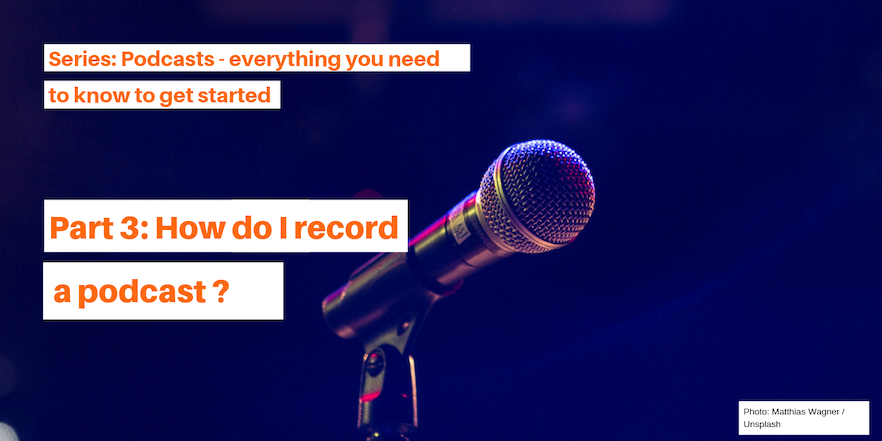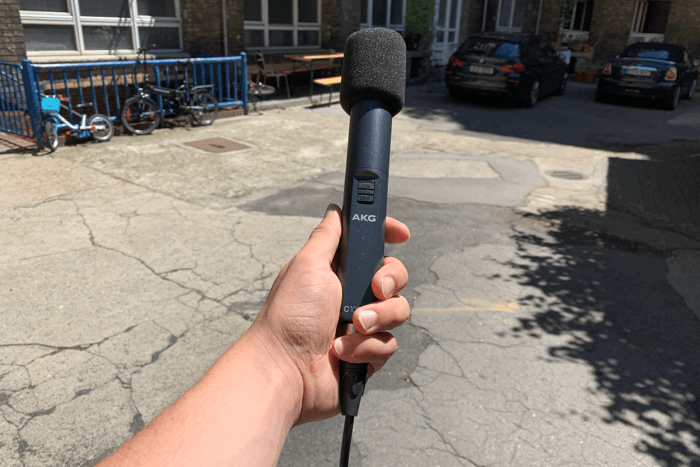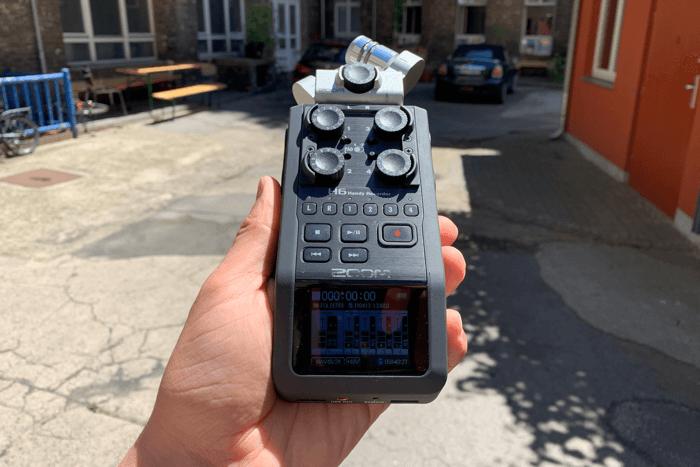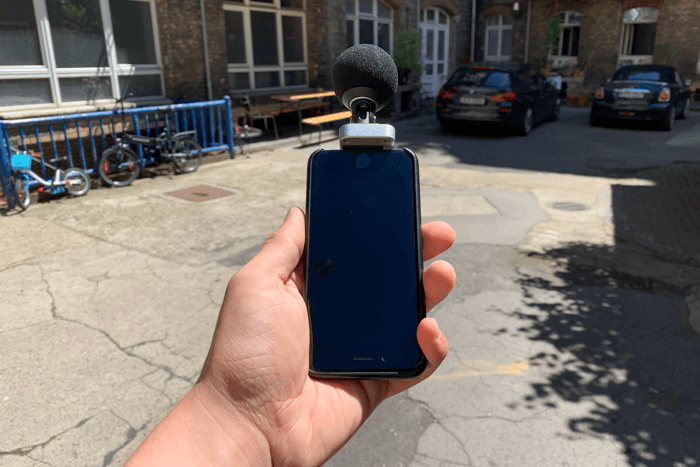How do I publish a podcast?
In the series "Podcasts - everything you need to know to get started" we take a closer look at different aspects of podcasting. Part 7 is about the...
In the series "Podcasts - everything you need to know to get started" we take a closer look at different aspects of ...
In the series "Podcasts - everything you need to know to get started" we take a closer look at different aspects of podcasting. Part 3 is about microphones, recorders and surround sound.

Creating a podcast isn’t that complicated when you know how to do it. In this blog post, we’ll show you how to record your podcast and make it sound as good as possible. It’s about the technology, but also about the ideal room.
We have a fresh, updated 10-step guide to help you start your podcast from scratch. Get started today with expert tips and recommendations to ensure your podcasting success.
Other parts of the series “Podcasts - everything you need to know to get started”
“Recording a podcast is easy,” someone might have told you before. That’s only partly true. It really doesn’t require that much technology: A microphone, an audio recorder or a computer and on you go. But the truth is: just putting a smartphone on the table and recording a round of conversations is not enough to achieve good sound quality. Considering that more and more podcasts are fighting for the listener’s attention, (poor) audio quality should not be a reason to switch off.
Many people forget: the room in which you record has a considerable influence on the sound. Very little podcast newcomers will be able to record in a recording studio. If you pay attention to a few things, you can improve the acoustics of your room considerably. Smooth surfaces such as windows and free walls reflect the sound very strongly and cause too much reverberation. So it helps if you draw a curtain in front of the windows, put a carpet in the room and have bookshelves on the walls. So the sound is broken and partly “swallowed”. If you podcast alone, you can also hang a duvet in a cupboard and speak in this direction.
Also very important: During a recording, all mobile phones should be switched to flight mode, otherwise unpleasant noise may occur. By the way: You can also make very good recordings outside, as the sound is hardly reflected on an open surface. Here, however, wind and other disturbing noises (cars, people, construction sites, etc.) should be considered.
There is a huge selection of different microphones in all price ranges. We explain the most important terms and recommend equipment for different applications.

The microphone ‘AKG C1000 S’ is well suitable for reportages
Dynamic microphones have a weaker output signal, so the preamplifier of your audio interface / recorder should be low-noise. This means that even if the signal is amplified strongly (high gain), little noise will be added by the preamplifier. Dynamic microphones are usually cheaper and more robust than condenser microphones..
Condenser microphones have a stronger output signal, so they require less gain. This requires phantom power, e.g. a voltage that the audio interface / recorder sends to the microphone. As a rule, they are less robust than dynamic microphones.
Large diaphragm microphones are a subcategory of dynamic and condenser microphones. As the name suggests, the diaphragm is particularly large, providing a “fuller” sound. This type of microphone is used in radio studios, for example, but is not suitable for mobile use.
Most professional microphones have an XLR connector. The analog signal is transmitted to the audio interface / recorder via a suitable cable. The advantage: They are versatile, the cable can easily be replaced in case of a defect and the length can be changed as required. In addition, several microphones can be connected to one audio interface / audio recorder. The disadvantage: To record the signal directly with a computer, an audio interface is required which converts the analog signal into a digital one.
There are also microphones with USB port that are made for computer use. The analog / digital converter is built in directly, so no separate audio interface is required. The advantage: If only one microphone is needed on site (because only one speaker is present or the others are connected online), a space-saving and simple setup can be realized. The disadvantage is that individual components cannot be replaced and are therefore less flexible. In addition, several USB microphones should not be operated on the same computer, since USB allows the microphones to “diverge” in time.
An audio interface or audio recorder is only necessary if you use XLR microphones. This functionality is already built into USB microphones. An audio interface converts the analog signal from the microphone into a digital signal so that it can be stored and played on the computer, smartphone, etc. An audio interface is an analog-to-digital converter that connects directly to a computer, tablet or smartphone to record sound. An audio recorder, on the other hand, can record the signal directly, usually on an SD card. They are therefore particularly suitable for outdoor use. Many audio recorders can also be operated as an interface on the computer. This is helpful if you want to record the signal directly on the computer and stream it live if necessary.

The audio recorder ‘Zoom H6’ is very versatile applicable
If you can’t find your application here, feel free to write us and we’ll give you individual tips.

With the ‘Shure Motiv MV88’ you can make good audio recordings with the iPhone
Next: How do I edit an audio file? (2. August)
Note: We did not receive any money or other consideration for mentioning podcasts, hardware or software in this article. The recommendations are based on personal experience or research and are of course not exhaustive.
Podigee is the best all-in-one podcast package on the market. We offer you everything you need to successfully distribute your podcast on all podcast platforms. Plus, you get fantastic customer service and the best podcast analytics in the industry. Try Podigee 14 days for free: /en/pricing/
In the series "Podcasts - everything you need to know to get started" we take a closer look at different aspects of podcasting. Part 7 is about the...
In the series "Podcasts - everything you need to know to get started" we take a closer look at different aspects of podcasting. In part 1, we clarify...
In the series "Podcasts - everything you need to know to get started" we take a closer look at different aspects of podcasting. In part 2 we will...